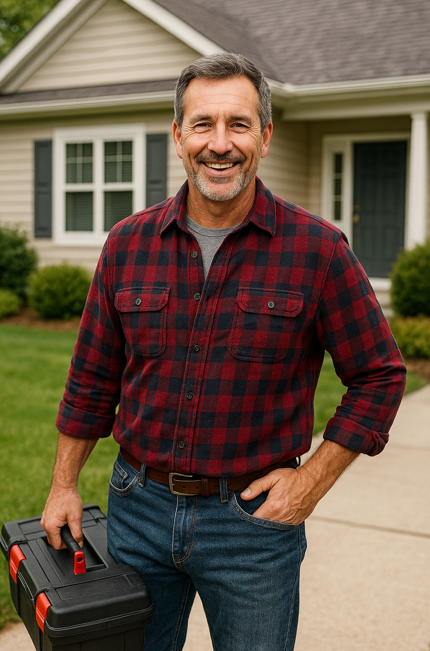Upgrading to a high-efficiency R‑32 packaged air conditioner isn’t just about comfort—it’s a solid financial decision. Between federal tax credits, state rebates, and long-term energy savings, the return on investment (ROI) can be significant. This guide breaks down how you can take full advantage of available incentives, understand your savings, and make the smartest choice for your home.
Why Choose an R-32 Packaged System?
R‑32 refrigerant systems offer several benefits that add value beyond initial price:
-
Energy Efficiency: According to the U.S. Department of Energy, switching to an ENERGY STAR-certified system can reduce cooling costs by 20-40% (DOE Energy Savings).
-
Environmental Impact: R‑32 has a Global Warming Potential (GWP) roughly one-third that of traditional refrigerants, making it a greener choice.
-
Durability and Comfort: These units typically last 15–20 years with proper maintenance, delivering consistent, reliable cooling.
-
Home Value: Energy-efficient HVAC systems can increase resale value and attract eco-conscious buyers.
With these advantages, financial incentives make upgrading even more attractive.
Federal Incentives: Tax Credits and More
One of the biggest opportunities comes from the federal government:
-
The Inflation Reduction Act offers a tax credit of 30% of the total cost (including installation) for qualified systems installed between 2023 and 2032, with a cap of $600 per year. To qualify, systems must meet minimum efficiency standards (usually 16 SEER2 or higher).
-
You can claim this credit when filing your federal taxes using IRS Form 5695 (IRS Tax Credit Information).
Additionally, many R‑32 packaged systems are ENERGY STAR-certified, making them eligible for rebates and further incentives (ENERGY STAR Rebate Finder).
State and Local Rebates
On top of federal programs, many states and local utilities offer rebates that can cut your upfront costs significantly:
-
California provides rebates up to $1,000 for qualifying systems through programs like Energy Upgrade California.
-
New York State offers rebates up to $750 via NYSERDA (DSIRE Database) provides a comprehensive database of available rebates and incentives by state and locality.
-
States like Texas, Florida, and others have utility-specific programs with rebates ranging from 10% to 30% of purchase and installation costs.
It's worth checking your local utility or state energy office for up-to-date offerings.
Shopping Smart: Contractor and Retailer Deals
When buying from reputable suppliers such as The Furnace Outlet’s R-32 Residential Packaged Air Conditioners, look for promotions including:
-
Bundled discounts
-
Free or discounted smart thermostats
-
Assistance in rebate paperwork
Many contractors will help you apply for all applicable incentives—never hesitate to ask!
How to Calculate Your ROI
Understanding your return on investment requires some number crunching:
-
Total Cost: Include equipment, installation, ductwork, and any necessary electrical upgrades.
-
Incentives Applied: Deduct all federal, state, and local rebates and tax credits.
-
Energy Savings: Calculate annual savings based on your previous utility bills and estimated efficiency improvements. The Department of Energy provides helpful calculators to estimate this (DOE Energy Saver Calculator).
-
Maintenance Costs: Budget around $150 per year for tune-ups and minor repairs.
-
Payback Period: Divide your net investment by yearly savings to see how many years until you break even.
For example, if your installed cost is $8,000 and you receive $3,000 in incentives, your net investment is $5,000. If you save $1,200 annually on energy, you’ll recover your costs in roughly 4.2 years, then enjoy pure savings for the rest of the system’s lifespan.
Avoiding Common ROI Mistakes
To get the most from your investment:
-
Ensure proper system sizing through a Manual J load calculation performed by a certified technician—oversized or undersized units waste energy and money.
-
Inspect and seal ducts to prevent air leaks; poorly sealed ducts can lose up to 20% of airflow.
-
Don’t attempt DIY installation; improper setup can void warranties and disqualify rebates.
-
Upgrade to a smart thermostat for an additional 10-15% in energy savings.
Financing Options to Ease Upfront Costs
If paying upfront is difficult, consider:
-
0% interest loans offered through many utility companies or local government programs.
-
Home equity loans with favorable rates for energy efficiency projects.
-
Property Assessed Clean Energy (PACE) financing, available in many areas, which allows repayment through property taxes.
Post-Installation Tips for Maximum ROI
-
Track your energy bills month-to-month to confirm savings.
-
Use your smart thermostat’s app to monitor and adjust energy usage habits.
-
Schedule a post-installation check-up (often free from contractors) to optimize system performance.
Environmental Benefits Add to ROI
Beyond dollars, investing in R-32 systems reduces your carbon footprint significantly. Each 1,000 kWh of electricity saved avoids approximately 0.7 metric tons of CO₂ emissions, helping combat climate change (EPA Greenhouse Gas Equivalencies).
Stay Updated on Incentives
Incentive programs evolve constantly. Bookmark and regularly check:
-
ENERGY STAR Rebate Finder
-
DSIRE Database
-
Your utility’s website
-
Manufacturer newsletters
Conclusion: A Smart Financial Move
When you combine the inherent energy savings of an R-32 packaged air conditioner with federal tax credits, local rebates, and smart purchasing strategies, your investment pays for itself—and then some. For detailed options and models to get started, check out The Furnace Outlet’s R-32 Residential Packaged Air Conditioners.
If you need help with rebate navigation, ROI calculations, or installation advice, I’m here to assist.







